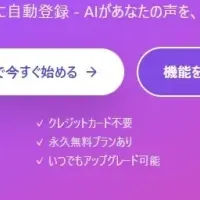
MicroAlgo Inc. Introduces Advanced Quantum Edge Detection Algorithm for Revolutionary Image Processing
Revolutionizing Image Processing with Quantum Edge Detection
MicroAlgo Inc., a forward-thinking technological entity, has recently announced its groundbreaking quantum edge detection algorithm designed to optimize real-time image processing. This innovative solution promises to transcend the limitations associated with classical methods, offering improved efficiency and performance for edge intelligence devices.
The Breakthrough in Edge Detection
At the heart of this technology lies the capability to optimize feature extraction via quantum circuits, effectively reducing the computational complexity from O(N²) to O(N). This advancement ensures that detection accuracy is maintained while significantly enhancing processing speed, a game-changer for industries relying on image interpretation.
The algorithm operates based on quantum state encoding and the principles of quantum convolution. By transforming image pixel information into quantum state vectors, the algorithm enhances features and extracts edges efficiently through quantum gate operations. The use of quantum parallelism enables the simultaneous processing of multiple pixel neighborhoods, creating a remarkable improvement in performance.
Quantum Mechanics Meets Image Processing
To illustrate, the quantum Sobel operator leverages quantum amplitude amplification techniques that enhance gradient responses in key edge regions. Simultaneously, the quantum Canny algorithm employs quantum state entanglement to achieve collaborative multi-scale edge detection. Notably, these quantum approaches exhibit advantages over traditional algorithms, particularly regarding noise robustness, multi-scale feature fusion, and overall energy efficiency during computation.
MicroAlgo’s innovative architecture also includes a hybrid approach that combines quantum preprocessing, quantum feature extraction, and classical post-processing. This integration allows for enhanced adaptability and optimization.
Detailed Breakdown of Processes
1. Image Quantum Encoding:
A two-dimensional image matrix is transformed into a quantum state input. Through amplitude encoding, pixel grayscale values are mapped onto quantum states, allowing for intricate processing capabilities. For instance, in an 8-bit grayscale image, 3 qubits represent each pixel, reflecting a comprehensive dataset in quantum superposition states.
2. Quantum Edge Detection Operations:
Constructing a quantum convolution circuit involves parameterized quantum gates that create trainable filters. These filters can dynamically adjust their parameters, maintaining high sensitivity and directional accuracy for edge detection. By rotating quantum state phases, the algorithm achieves multi-directional edge responses, further refined by quantum noise suppression techniques that use quantum error correction.
3. Quantum Measurement and Result Decoding:
The process culminates in projective measurements, translating quantum probability amplitudes into classical distributions. Edge images are reconstructed utilizing maximum likelihood estimation, further enhanced through binarization algorithms that adapt to various thresholds.
4. Hybrid Optimization Framework:
A variational quantum algorithm (VQA) is utilized to optimize quantum circuit parameters. This collaborative model employs classical optimizers to ensure that performance metrics such as recall and accuracy are continuously improved, establishing an effective quantum-classical feedback loop.
Applications Across Industries
MicroAlgo's quantum machine learning algorithms harness the advantages of quantum state superposition, leading to transformative impacts on computational efficiency and resource consumption. In practical applications, such as medical imaging analysis, the technology has been instrumental in quickly locating brain tumor boundaries in MRI scans, significantly increasing detection speed. In remote sensing, it has enhanced the extraction of waterlines amidst complex marine conditions, reducing detection errors considerably.
Furthermore, in industrial settings, the technology enables accurate sub-pixel-level crack detection in precision components, while enhancing autonomous driving capabilities by improving lane line recognition accuracy during adverse weather.
Future Prospects
Looking forward, MicroAlgo's ambitions for the quantum edge detection algorithm include further explorations into multimodal image fusion, encrypted image analysis, and integration with photonic quantum chips. Through these advancements, the company aims to reshape paradigms in image processing, facilitating breakthroughs across sectors like intelligent security, biomedical research, and beyond.
About MicroAlgo Inc.
MicroAlgo Inc., a Cayman Islands exempted company, is dedicated to advancing bespoke central processing algorithms. They strive to integrate these algorithms with both software and hardware solutions, thus elevating customer satisfaction, achieving cost savings, and fulfilling varying technical goals. Their services encompass algorithm optimization and enhancing computational power, enabling a long-term commitment to technological innovation and operational excellence.
Topics Consumer Technology)










【About Using Articles】
You can freely use the title and article content by linking to the page where the article is posted.
※ Images cannot be used.
【About Links】
Links are free to use.